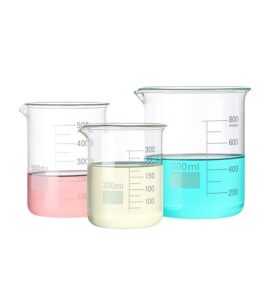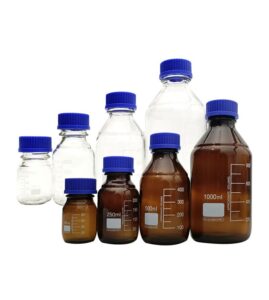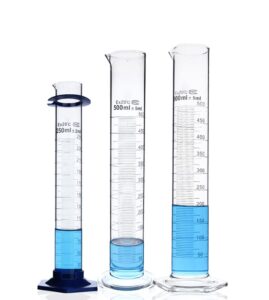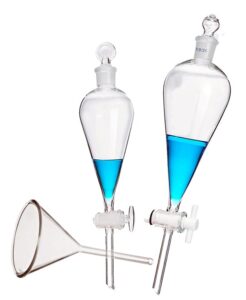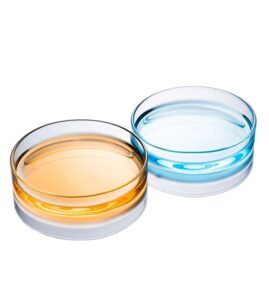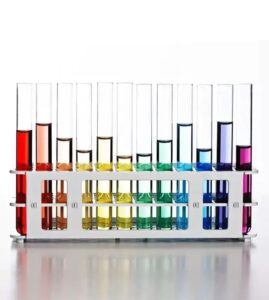Have you ever wondered how the seemingly fragile glassware in labs withstands extreme conditions without fail? What goes into ensuring these essential tools don’t turn into hazards? In the intricate dance of chemical reactions, the silent partner is often the glassware. But what happens behind the scenes to keep it from becoming a liability?
The key lies in understanding “Lab Glassware Production Safety 101: Preventing Accidents Before They Happen”. By adhering to strict safety protocols during production, manufacturers minimize risks not just to the end-user but also to their employees. This process is crucial in maintaining the integrity of scientific work.
Keep reading to unravel the secrets of safe glassware production.
What Makes Lab Glassware Different?
Lab glassware is not your ordinary glass. It’s designed to withstand high temperatures, corrosive chemicals, and physical stress. But, how do we ensure this durability from production to lab bench?
Safety starts with the material selection. Borosilicate glass is often the go-to due to its thermal resistance and durability. Manufacturers also employ quality control measures, like stress-testing and chemical resistance checks, to ensure each piece can handle the rigors of lab life.
The Production Process: A Safety Perspective
In the quest for excellence in lab glassware production, attention to detail in every step is paramount, ensuring not only the quality of the products but also the safety of those who make them. This comprehensive approach encompasses several key areas:
- Glass Material Selection: High-purity, chemically stable raw materials are crucial in the high-temperature, high-pressure environments of glass production. Selecting the right materials reduces the impact of impurities on product quality and production efficiency, ensuring that the final glassware meets stringent scientific standards.
- Preheating and Cooling: Before any glassware takes shape, the raw materials must undergo thorough preheating and cooling processes. This step is critical to mitigate thermal stress and prevent cracks that could compromise the structural integrity of the glassware. Controlled temperature changes ensure that each piece can withstand the demanding conditions of laboratory use.
- Process Control: Rigorous control over each production parameter, including temperature, pressure, and time, is essential. These controls ensure that each piece of glassware is produced consistently and reliably, meeting the exacting standards required for laboratory applications.
- Equipment Maintenance: Regular maintenance of production and testing equipment is non-negotiable. Activities such as cleaning, lubrication, and replacement of worn parts are necessary to keep machinery operating smoothly and accurately. This not only prevents downtime but also ensures the precision of the glassware produced.
- Safety Management: A robust safety management system on the production floor is a cornerstone of safe glassware production. This system includes emergency response plans, safety measures, and comprehensive training for all personnel. Ensuring the safety of employees and the smooth operation of equipment is a priority that underpins the entire production process.
- Waste Management: The production of lab glassware inevitably generates waste, including glass shards, effluents, and emissions. Proper segregation, collection, and disposal of these materials are crucial to minimizing environmental impact and ensuring compliance with regulations. Effective waste management practices demonstrate a commitment to environmental stewardship and community health.
By adhering to these principles, the production of lab glassware can achieve a balance between operational efficiency, product quality, and workplace safety. It’s a testament to the industry’s commitment to excellence and its unwavering focus on safeguarding both its products and its people.
Handling and Storage: Preventing Post-Production Accidents
Once the glassware is produced, the focus shifts to minimizing breakage and exposure to harmful chemicals. Proper packaging, handling instructions, and storage solutions play critical roles in this stage. For instance, using specialized padding materials can prevent scratches and cracks during transport, which might compromise the glassware’s integrity under laboratory conditions.
Training and Awareness: The Human Factor
Even the best safety protocols can falter without proper implementation. Regular training sessions and safety drills for employees ensure that everyone is aware of the potential risks and knows how to mitigate them. This education extends to proper emergency response techniques, should an accident occur.
Environmental Considerations: Beyond Immediate Safety
Sustainable practices in the production of lab glassware are gaining traction. Manufacturers are exploring recycling programs and energy-efficient kilns to reduce their environmental footprint. These measures not only contribute to the planet’s well-being but also promote a culture of safety and responsibility within the industry.
Emphasizing Ergonomics and Worker Safety
At the heart of safe glassware production is the well-being of the workers themselves. Ergonomics play a crucial role in preventing musculoskeletal injuries, common in occupations requiring repetitive motions or prolonged standing.
- Ergonomic Design of Workstations: Adjusting the height of work surfaces, providing anti-fatigue mats, and ensuring tools are within easy reach can significantly reduce strain on workers.
- Regular Breaks and Stretching: Encouraging short breaks and stretching exercises helps prevent fatigue and injuries over long shifts.
Safety isn’t just about preventing accidents; it’s about creating a work environment that prioritizes the health and comfort of employees.
Advanced Technologies in Safety Measures
The integration of technology in the production process can enhance safety measures. Automated systems reduce the need for direct handling of glassware, thereby minimizing the risk of cuts or exposure to hazardous chemicals.
- Automation and Robotics: For tasks that involve high precision or exposure to dangerous conditions, robots can offer a safer alternative to manual labor.
- Monitoring and Alarm Systems: Sensors and alarms can detect unsafe conditions, such as temperature spikes or chemical leaks, alerting workers before incidents occur.
These technological advancements not only improve safety but also increase efficiency and product consistency.
Regulatory Compliance and Standards
In the realm of lab glassware production, adhering to rigorous safety standards transcends borders, emphasizing a universal commitment to worker protection and product reliability. The industry is governed by a comprehensive framework of safety regulations, established to ensure that every piece of glassware not only serves its scientific purpose but does so safely.
Broad-Spectrum Compliance
Compliance with safety standards is a cornerstone of the lab glassware production process. Regulatory bodies across the globe establish guidelines that dictate the minutiae of safe manufacturing practices, from the handling of raw materials to the finished product inspections. These regulations are designed to safeguard workers from potential hazards inherent in the production process.
Internal Safety Oversight
Beyond external regulatory compliance, factories implement their own rigorous safety monitoring systems. This internal oversight is crucial for identifying potential risks and implementing corrective actions swiftly. Regular safety audits and risk assessments form the backbone of these systems, ensuring that safety protocols evolve in tandem with new technologies and methodologies.
Comprehensive Training Programs
The backbone of any safety strategy is the people who implement it. Comprehensive training programs are essential to equip workers with the knowledge and skills they need to navigate the complexities of glassware production safely. This education extends beyond basic safety practices to include specialized training in handling hazardous materials, emergency response, and adherence to quality standards.
Continuous Adaptation and Improvement
The landscape of safety standards and regulations is ever-evolving, necessitating a culture of continuous learning and adaptation within the industry. Keeping abreast of regulatory changes and industry advancements is not merely a regulatory requirement but a commitment to excellence and safety. This proactive approach ensures that safety measures are not static but improve continuously, reflecting the latest in safety research and technological innovation.
In conclusion, regulatory compliance and internal safety oversight work hand in hand to ensure the highest levels of safety and quality in lab glassware production. Through rigorous training programs and a commitment to continuous improvement, the industry upholds its responsibility to protect workers and end-users alike, ensuring that scientific progress is supported by safe, reliable tools.
The Culture of Safety
The bedrock of any effective safety strategy is not found in protocols and checklists alone but in the culture that permeates an organization. A robust safety culture is the ecosystem within which safety measures thrive, characterized by open communication, continuous education, and several other foundational pillars:
Leadership Commitment
Leadership commitment is critical in fostering a culture of safety. When leaders prioritize safety, allocate resources to safety initiatives, and lead by example, it sets a tone that resonates throughout the organization. This top-down emphasis on safety demonstrates to all employees that their well-being is paramount, encouraging a collective commitment to maintaining a safe working environment.
Recognition and Incentivization
Acknowledging and rewarding safe behavior is a powerful tool in reinforcing a culture of safety. When employees are recognized for their contributions to safety, it not only validates their efforts but also motivates others to follow suit. Incentive programs can range from verbal acknowledgments to formal awards, fostering a positive atmosphere where safety is both practiced and celebrated.
Psychological Safety
Creating an environment of psychological safety is essential for a true culture of safety to flourish. Employees must feel secure in voicing concerns, asking questions, and admitting mistakes without fear of embarrassment or punishment. This open environment encourages learning from near-misses and honest discussions about safety improvements, fostering an atmosphere where safety innovations can emerge from any level within the organization.
Collaboration Across Departments
Safety is not the sole responsibility of a designated safety department; it is a cross-departmental endeavor. Encouraging collaboration between departments to address safety challenges fosters a more holistic approach to safety management. When diverse perspectives come together, innovative solutions emerge, enhancing the organization’s ability to identify and mitigate risks effectively.
Integration into Daily Operations
For a safety culture to be truly effective, safety considerations must be woven into the fabric of daily operations. This means integrating safety checklists into routine tasks, incorporating safety discussions into regular meetings, and making safety performance a key metric in evaluating projects and processes. When safety becomes a part of the day-to-day, it transitions from being seen as an external requirement to an intrinsic value.
By building upon the pillars of open communication and continuous education with leadership commitment, recognition and incentivization, psychological safety, cross-departmental collaboration, and integration into daily operations, organizations can cultivate a safety culture that not only prevents accidents but also enhances overall productivity and employee satisfaction. This holistic approach ensures that safety is not just a policy but a core value that guides every action and decision within the organization.
Conclusion
In wrapping up, it’s clear that forging a path toward enhanced safety in lab glassware production isn’t just a regulatory mandate—it’s a moral imperative. Embrace these principles, champion a culture of safety, and commit to continuous improvement. Let’s collectively strive for excellence, not just in the products we create but in the secure and sustainable methods we employ. Join the movement towards a safer, more responsible future in scientific exploration. Together, we can set new standards for safety and quality in the pursuit of discovery.
FAQ: Lab Glassware Production Safety 101
What is lab glassware production safety?
Lab glassware production safety encompasses the protocols and practices implemented to minimize risks and ensure the well-being of workers and the integrity of the glassware produced for laboratory use. It involves material selection, process control, equipment maintenance, and adherence to regulatory standards.
Why is safety important in lab glassware production?
Safety is crucial to prevent accidents, injuries, and health hazards for workers, as well as to ensure that the glassware produced is reliable and safe for scientific research. A commitment to safety reflects the industry’s dedication to quality, sustainability, and ethical practices.
How can safety in lab glassware production be improved?
Improvements can be made through regular training and education of employees, implementation of advanced safety technologies, fostering a strong safety culture, and continuous monitoring and updating of safety practices in line with regulatory changes and industry advancements.
What role does regulatory compliance play in lab glassware production safety?
Regulatory compliance ensures that production processes meet established safety and quality standards, protecting workers and end-users. Adherence to regulations from bodies like OSHA helps maintain high safety standards and fosters trust in the products produced.
How does environmental consideration factor into lab glassware production safety?
Environmental considerations are integral to modern safety practices, encompassing waste management, the use of sustainable materials, and energy-efficient processes. These practices not only minimize the environmental impact of production but also contribute to the overall safety and health of the workplace and community.


